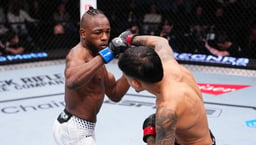
Issue 178
May 2019
Taking five, or even six fights a year has proved a successful policy for those wanting to fast-track their way to MMA success, but is it always the smart approach and can there be a downside?
Any time, any place, anywhere. It’s a commonly quoted mantra in the world of MMA, but when push comes to shove, few fighters legitimately practice what they preach at the highest level of the sport.
Taking a methodical and gradual route to the top may have been the way many fighters went about their business in the past, but that might all soon be about to change given the recent surge of fighters rolling the dice and taking as many as six fights in little over a year.
With the likes of Israel Adesanya (5 fights in 364 days), Anthony Smith (5 fights in 392 days), Thiago Santos (6 fights in 385 days) and Johnny Walker (6 fights in 357 days) rising to prominence in the past 18 months, the standard has been set for the rest of the UFC roster to match their work ethic. The stats alone don’t tell the whole story though and their motivation for being so active differs in each situation.

Adesanya made his UFC debut back in February 2018 when he defeated Rob Wilkinson via TKO at UFC 221. “The Last Stylebender” then went on to record victories over Marvin Vettori, Brad Tavares, Derek Brunson and Anderson Silva before setting up an interim UFC middleweight title shot against Kelvin Gastelum at UFC 236 in April 2019.
Undefeated in MMA with a 16-0 record, Adesanya has never been scared to put his winning streak on the line, and remaining active has allowed him to progress faster towards his first UFC title shot. For Adesanya, it has always been a case of taking fights when they are offered.
“I left Melbourne [after beating Silva] and within two days they offered me this fight,” Adesanya told reporters at the UFC 236 pre-fight press conference. “I just said ‘Let me breathe for a second, let me get out of Melbourne for a second and just chill.’ I think within the next two days I was like, ‘Sign me up, let’s do the fight.’ Interim or no interim, at the end of the day, we had a deal. Dana and I sat down and we shook on it that after Anderson Silva I would get a belt in my next fight and I’m going to do that.”
According to Adesanya, his rapid rise to a title shot hasn’t gone unnoticed by the rest of the UFC roster. Having gone from unranked to number five in the rankings and now on the verge of capturing UFC gold, Adesanya believes he’s set a blueprint that many other fighters are trying to follow.
“I think people are taking note now,” Adesanya says. “My debut was just in February last year and I fought in February again this year. That’s five fights in one year and Dana even said, ‘If you want to stay relevant, stay active’ and I’ve been one of the few people doing this. “No one else apart from maybe ‘Cowboy’ Cerrone is as active as me,” he continues. “Look at everyone now. Jon Jones just said he wants to fight four times in one year and he’s a champ. People used to be fighting twice a year. I think Robert Whittaker just fought once in the last year. I’m just going to keep active.”
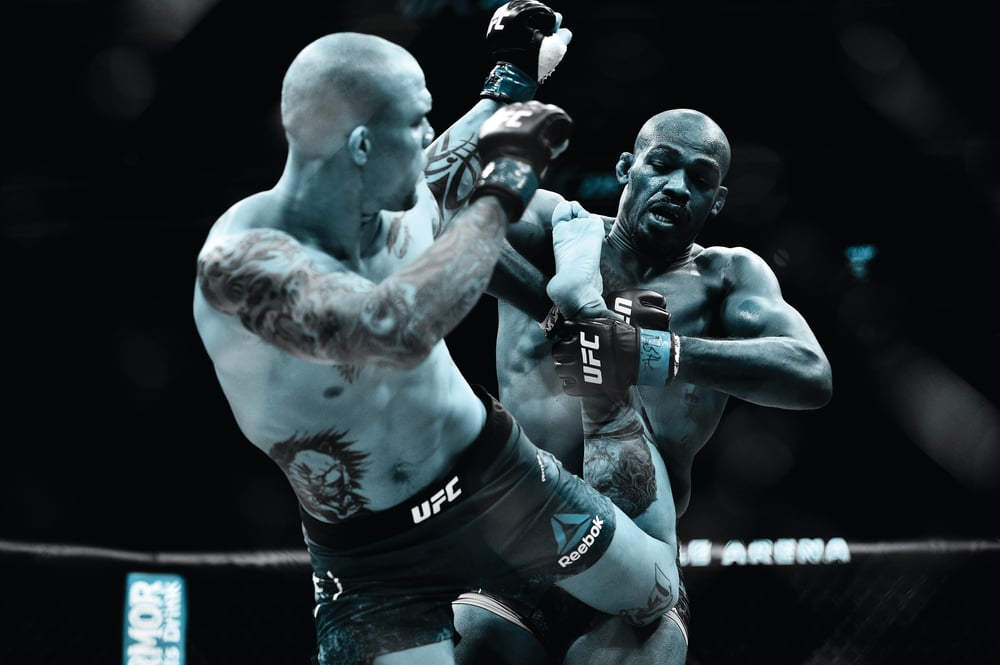
Adesanya’s motivation to stay active has been fuelled by UFC President Dana White who has never been shy to heap praise on fighters who accept any challenge. Balancing up whether a fighter is taking on too much too soon has always been a plight for many a promoter, but White has always been of the philosophy that turning down fights isn’t the way to go about your business if you want to be a superstar in the sport.
“He’s awesome,” White said of Adesanya during a press conference prior to UFC 236. “After his last fight, he [Adesanya] said ‘I’m going on vacation with my family.’ He paid for a three-week family vacation and we called him and said that we’re going to do this title fight and did he want the fight? He left his vacation, left his family and went back into camp. How bad do you want to be a champion? Do you want the next title shot?”
White’s praise of Adesanya isn’t an isolated incident. The UFC President recently highlighted rising light heavyweight star, Johnny Walker as another fighter who has caught his eye for reasons other than his elaborate celebrations. With Walker riding a nine-fight win streak with six of the victories coming inside 357 days, the Brazilian has quickly made a name for himself in the UFC’s 205-pounds division.
Following his highlight reel KO victory over Misha Cirkunov at UFC 235, White couldn’t help but talk up the prospects of the flamboyant striker. “This kid is awesome man, this kid is something special,” White said during the UFC 235 post-fight press conference. “This guy wants to fight every weekend which I love. When you’re a rising star and you have the talent that he has, then staying active is the best thing you can do for your career. We won’t throw him in against anyone serious anytime soon.”
Whilst pleasing the boss and fighters wanting to maintain their momentum are good reasons to keep active, it’s a coach’s role to ensure their fighter isn’t taking on too much. Adesanya’s head coach, Eugene Bareman has been the mastermind behind his rise to a UFC title shot and ultimately he’s the man that has given the green light on each fight put in front of him. Bareman explains why he’s been comfortable with his students
Adesanya and Dan Hooker being as active as they have in the past year. For Bareman, it’s all about opportunity and getting the best out of fighters.
“We are fighting as frequently as we can to take advantage of the small window that the athletes have while they are in the peak stage of their career,” Bareman explains. “There is also a bit of strategy regarding the UFC guys where you’re only as relevant as your last fight. So if those guys are fit and healthy, we try to get them in as soon as possible. Financial gain plays no part in the decision-making process when deciding to take a fight.”
Over time, fighting styles, tactics and training methods evolve and Bareman and his team are doing everything they can to ensure they keep up. Using the latest technology to aid his fighters during camps is something that the City Kickboxing head coach believes used to set his gym apart from the others, but it’s an advantage he believes has diminished in recent years.
“We closely monitor all the fighters that are competing frequently and we have data collected for some of these guys going back years into the early stages of their career,” Bareman explains. “We use several key markers to monitor the state of the athlete’s central nervous system to ensure we are maximizing athlete recovery and output over the course of a training camp.
“We implemented tools like Heart Rate Variability (HRV) going back years now when many camps around the world were not familiar with such technology,” he continues. “I believe my athletes initially gained a distinct advantage from this. Nowadays though, many coaches and camps have implemented the same rigorous monitoring so we no longer have that head start.”
To get the most out of his fighters each time they step inside the cage, Bareman recognizes the fact that training methods have to be adapted given the shorter preparation and recovery times. Sparring is one of the most commonly debated elements of MMA training and Bareman tends to side more with John Kavanagh’s view that it should be about “upgrading the software without damaging the software.”
“I believe that my gym is one of the lightest sparring gyms in the world,” Bareman argues. “A massive emphasis is put on skill work during sparring over athletic superiority. Out-thinking your sparring partner is always the primary goal and our coaches emphasize this in all the sparring we do. It’s a much safer sparring environment and more conducive to a fun, productive environment and a long career in a hard sport.
“We appreciate this isn’t everyone’s approach, but at the end of the day let the evidence do the talking,” he continues. “A light sparring environment can produce some of the best fighters on the planet. We probably need another ten years to truly deliver all the evidence needed to support a light sparring environment, but I believe my fighters in ten years will, neurologically, be in much better shape than many of their peers who train in harsher sparring gyms.”
Whilst Bareman can control the intensity of training, what he can’t control is the damage his fighters take when they compete. It’s only after the fights that Bareman and his team can assess what’s happened and they use a data-led approach when it comes to the management of their fighters.
“It’s always been a concern when the guys are fighting frequently whether we are pushing them too hard and it’s what has led us to implement strategies to closely monitor the state of their bodies,” Bareman says.
“We have a massive collection of data with performance markers and we can see straight away if an athlete is in a state of fatigue through several systems we use,” he continues. “The athlete’s opinion and markers like Rating Perceived Exertion (RPE) are also very important because no one knows the athletes better than themselves. I’m an advocate for training smarter and fighting more frequently, but that only happens when we’re all confident in the fighter’s welfare and that we’ve taken all the necessary checks.”
Bareman and his team know that it’s not just training methods and technology that enables the likes of Adesanya and Hooker to fight so regularly. He believes it takes a special kind of fighter to be able to perform at a high level frequently and that it has a lot to do with their attitude and the team around them.
“The real fundamental difference between the likes of Israel, Dan and several of my athletes over others is that they are true, honest professionals who know the importance of taking care of every single minute detail,” Bareman says. “They have a ‘leave no stone unturned’ attitude which is fostered not just by myself, but all the coaches and professionals involved in the team.”
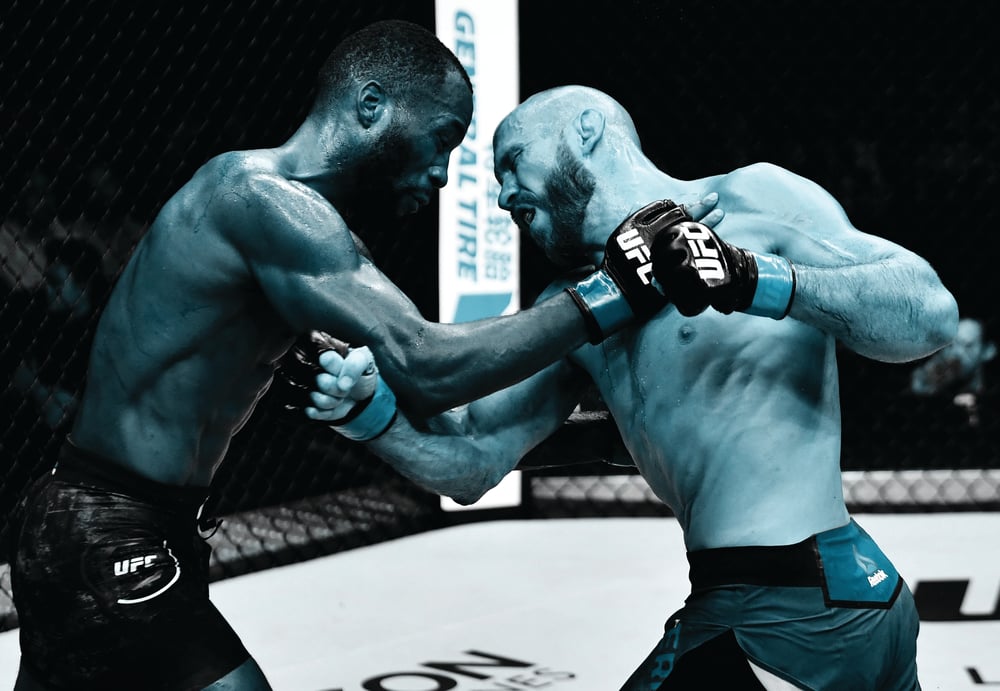
When it comes to fighting as often as possible, Donald “Cowboy” Cerrone is the one man who has set himself apart from the rest. Cerrone has built his reputation on being the man ready to step up to any challenge on any time frame and it’s this attitude that has found him a place in the hearts of fans worldwide. Averaging nearly four fights a year since 2015, Cerrone has stepped up to the plate multiple times to save the day for White and the UFC and it’s an attitude that has never wavered regardless of him being on a winning or losing streak. Even during the toughest time of his career between January 2017 and July 2018 when he had lost three out of his four fights, Cerrone’s attitude to taking fights never changed.
“I love my job more than any of you can ever imagine,” Cerrone said in the aftermath of his loss to Leon Edwards at UFC Fight Night Singapore. “I love getting in there and fighting, so winning and losing is part of this game, man. Unfortunately, it sucks: I only got half my check. But hey, I had fun. I really did. I had a good time. “I’m still looking to fight two more times this year, so If there’s anybody out there looking to fight Cowboy the old dog, give me a call and we can set this up.”
Cerrone himself admits that his relentless approach to taking fights and remaining active has come at the expense of his chances of capturing UFC gold. He also admitted in a recent interview that it was one of the catalysts for him moving his fight camps away from his original home at Jackson Winkeljohn.
“They would ask, ‘Why would you do this?’” Cerrone told ESPN prior to his fight with Alex Hernandez earlier this year. “That’s what we do. We fight. I just told them,
‘I’m doing it. Do you want to corner me or not?’ That was always my mentality.”
Whether Cerrone goes on to win a UFC title or not, he will always be held in high regard by Dana White. The lengths to which Cerrone is willing to go to were on full display at UFC 234 in February when he offered to step up and fight Kelvin Gastelum on just 24-hours’ notice after Robert Whittaker was pulled from the fight at the eleventh hour. Whilst the bout was never in reality going to take place, White knew Cerrone was deadly serious about his offer.
“He’s absolutely nuts and I love it!” White said on social media after the event. “It’s going to be a sad day when he retires.”
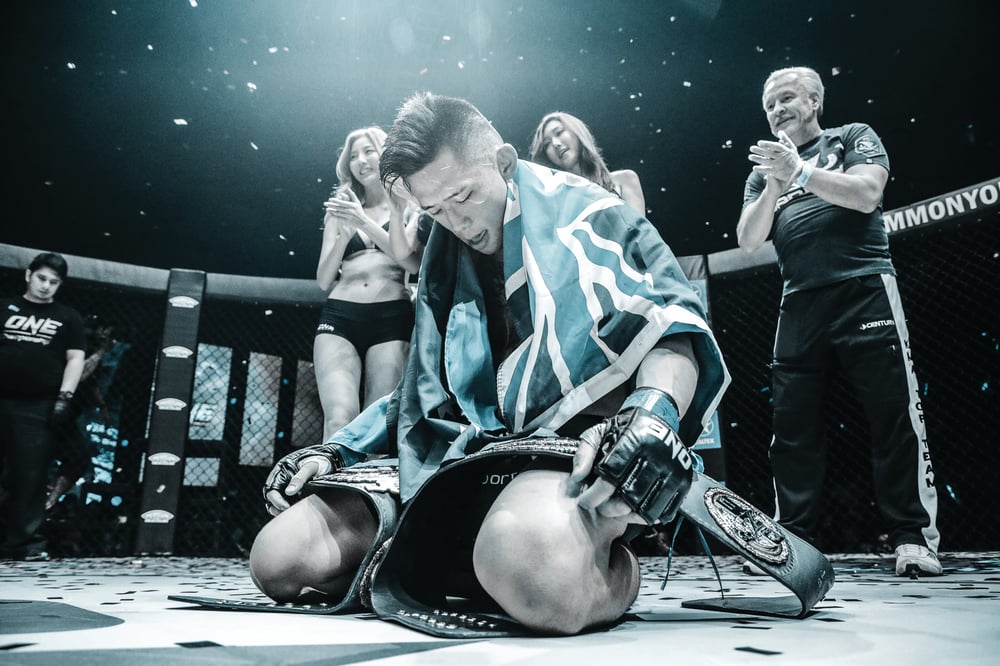
Cerrone has always been one to push himself to his limits and fight as often as possible, but perhaps no one in the MMA world has pushed themselves harder than ONE Championship’s Martin Nguyen.
Between the period of August 2017 and July 2018, Nguyen fought no fewer than five times in an incredible 343 days. What made this feat even more remarkable though was the fact that he fought across three weight different classes and in five world title fights.
Nguyen explains it was the craziest stretch of his career and one that he never wishes to repeat. “I didn’t just fight five times, it was five title fights,” Nguyen recalls. “At that point in my career it was all about opportunity and I wasn’t listening to my body. I just thought that I had to capture the moment all the time and jump on every single opportunity that I was given. I just went with the fl ow and went into everything fearlessly, but those title fights take a massive toll on your body.”
Nguyen’s run began when he defeated Marat Gafurov to win the ONE featherweight title in August 2017. Less than three months later, Nguyen then made history by becoming the first man in the ONE Championship to hold two world titles when he went on to knock out Eduard Folayang to capture the ONE lightweight belt.
For most, two world titles would’ve probably been enough, but not for Nguyen. His desire to capture a third world title led him to accept a fight with ONE bantamweight champion, Bibiano Fernandes in March 2018. With four months to prepare, Nguyen said it was the easiest weight cut and preparation of his career, but unfortunately, on the night he lost out via a split decision and just fell short of capturing a third belt.
Nguyen didn’t have the opportunity to sit and dwell on the loss though and just 55 days later he found himself back in the cage defending his ONE featherweight title against Christian Lee in a largely forgettable a air. Both Nguyen and Lee looked o their game and with Lee unwilling to engage, Nguyen won the fight and came out of it relatively unscathed.
This would’ve been the perfect time for Nguyen to put his feet up but the dream of being the first man in the history of the sport to hold three world titles in a major organization was still very much alive.
“After that fight, I was messaging ONE asking if the fight with Belingon was going to happen or not,” he recalls. “I didn’t want to hang around at 68kg for another six to eight weeks and they never got back to me so I just went ahead and enjoyed my food and my drink and all that. I then got up to 72kg pretty quickly, but as soon as that happened I got an e-mail saying that I was fighting for an interim title in seven weeks. I was like ‘Oh s***, I got to lose 6kg in seven weeks – how am I going to do this?’”
“I messaged my nutritionist and I asked her plain and simple ‘Can I make the weight?’ She told me it was possible, but said it was going to be a very aggressive cut and very hard,” he continues. “I said I’d do it so she put me on a plan and I pushed it really hard for several weeks. I lost 6kg in seven weeks and I was weighing-in and just passing the hydration tests on both days. I have to admit it took quite a toll on my body and I was feeling weak during fight week. During fight week, I ran and rode on the bike, 5km in the morning, 5km at night running, and then I’d ride on the bike for 2-3km to warm down. In the three days before the weigh-in, I ended up doing 47km. It was terrible.”
Nguyen’s situation didn’t go unnoticed by those around him and his efforts to make weight during fight week were clearly evident. He was pushing himself too hard but nothing was going to stop him taking the fight. “My coaches, who were with me were like ‘What are you doing to yourself?’ Nguyen remembers. “They said ‘This isn’t you. We’ve never seen you do this before.’ It was fight week and I should’ve been relaxing, but instead I was just racking up the kilometers.
“My body was in like stress mode where it would hold onto everything that I would put into my mouth,” he continues. “Even the ONE Championship sta and other fighters were coming up to me and asking me if I was OK. I really wasn’t well, but I did whatever it took to make the weight.”
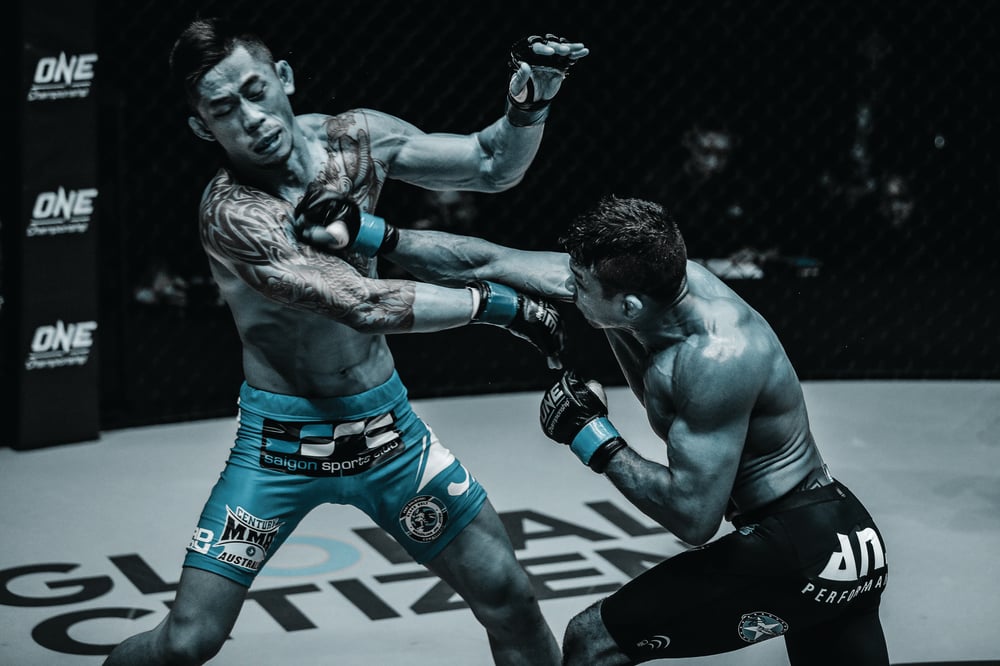
Nguyen eventually went on to make weight and pass the hydration tests, but early on in the bout, he suffered a foot injury that all but ended his hopes of winning the fight. The Australian never used his busy schedule or his lack of preparation time as an excuse for the loss, but he later admitted that he was nowhere near peak condition.
“I wasn’t carrying injuries from fight-to-fight, but it was more that the body was just breaking down on me,” Nguyen recalls. “Only my wife and I knew about this, but I was getting sick a lot easier than normal and it was the flu, headaches and fevers and all that. I’ll never make excuses and I don’t think that it really affected me fighting-wise, but it definitely had an effect on my preparations. I was just running with that youthful
mentality thinking that I was unbreakable.” “In hindsight, I think that the injury happened at the right time and it has made me realize how much of a break I needed to get back in there at my best,” he reflects philosophically. “I’d never do that all again. Never. In terms of me going back to bantamweight, I will do it, but it will be on my terms and in more controlled circumstances and by that I mean three months preparation. My first cut down to bantamweight was the best and easiest I’ve ever had. I was on weight two months out. It was easy. The second time aroundwas just way too much.”
The trend of fighters taking fights at an ever increasing rate raises questions about fighter safety. Dr David Wang, who sits on the International Mixed Martial Arts Federation (IMMAF) Medical Committee, has strong views on the topic and whether it’s appropriate for fighters to compete on such a regular basis.
“It’s not an easy topic and the answer is that it really depends on the situation,” Wang explains. “It is entirely possible that they do not have enough time to recover but this is very dependent on the bout itself. For example, winning by TKO after 30 seconds in the first round would not likely result in the need for much recovery. While a long bout with both fighters incurring significant trauma may take an extensive amount of time to recover from.
“If the athletes suffer significant and repeated head blows and then go on to suffer from headaches and dizziness for several months, they definitely need to take an extensive recovery period,” he reasons.
Wang says physical recovery is just one of the factors that fighters and coaches need to think about before signing up for their next bout. According to Wang, the mental welfare of the fighter is equally as important. “As a general rule, there is a balance that needs to be struck between training, fights, injury and recovery and this is unique to each individual,” Wang argues.
“The physical element of this is only part of the issue though and another consideration that has to be accounted for is mental fatigue. There is a lot of mental energy needed for peak performance and if one has repeated and frequent bouts it may become more difficult to reach mental peak due to mental fatigue.” Head trauma takes a large part of the focus when it comes to medical research in combat sports and there’s still plenty of ground to be covered. Taking fights on a frequent basis with less recovery time has often raised concerns in regards to fighter welfare and Wang believes that it’s important that fighters, coaches and promotions take every precaution necessary both in the gym and ahead of fights.
“I will say minimizing cumulative headshots is wise in this day and age and realizing the importance of recovery cannot be understated,” Wang says. “Cumulative injuries can have a significant impact late in life and one of the most common is arthritis following a joint injury. “One cannot ignore the fact that cumulative head injuries are currently being looked at in the development of neurodegenerative disease later in life. At this point in time there is no known threshold of head injuries that may lead to higher risk of neurodegenerative disease so it’s important that fighters, coaches and promotions make diligent and informed decisions when it comes to fighter welfare.”
Thankfully, as medical science improves, so does the knowledge and experience of the top coaches in the sport. One man who has been at the forefront of the ever-developing MMA landscape is Brandon “Six Gun” Gibson who has worked alongside some of the biggest names in the business including Cerrone, Jon Jones, BJ Penn, Carlos Condit, Yair Rodriguez and many more. Gibson knows that motivations vary from fighter-to fighter when it comes to accepting bouts, but one thing that never wavers is the safety precautions they take before accepting bouts and planning their preparations.
“There can be a variety of motives; opportunities, exposure, money, new contracts, potential title shots, title defences, pay-per-view points, exciting match-ups and making the most out of their time in the sport. The list goes on and on,” Gibson says.
“Regardless of the situation we absolutely take precautions,” Gibson continues. “The coaching staff always work very closely with the athlete to make sure they are not physically or mentally burning out. There is also a big difference in preparation between a three and five-round bout.”
As noted by Dr Wang, Gibson recognizes that preparations aren’t just about the physical condition of the fighter, but also their mental fitness. To ensure they are in optimum condition for their next bout, Gibson says adjustments are made depending on the circumstances and how they manage sparring is top of the list when it comes to taking precautions.
“The key to any success in this game is keeping their fire lit,” says Gibson. “We know burnout can occur and it can quickly lead to unsatisfactory performances. Each
practice takes passion, focus and motivation and if a fighter can’t give us that, we would advise them to take some time off .
“Sparring is typically the fi rst thing we adjust,” he continues. “Sparring can be a vital part of a camp, but preventing injury and damage to the fighter is our top priority. Our camp has a variety of drills, simulations and conditioning workouts that we will substitute in for sparring. We keep a close eye on injuries, and make adjustments when needed.”
According to Gibson, taking as many as four, five or six fights in the space of a year isn’t going to be advisable for every fighter on the UFC roster and it takes a certain kind of fighter to make the circumstances work.
“I think this is all dependent on each fighter,” Gibson reasons. “If every camp is plagued with injuries and fatigue, and the fights are hard fought battles, then I’d advise them to take some time off . However, if they are getting through camps and fights unscathed, then staying active and making the most out of their career is great. It’s just not something every fighter can do though.”
There’s no denying that fighting often and winning is possible at the highest level of MMA and the recent meteoric rises of Adesanya, Smith, Santos and Walker have shown that.
With great risk comes great reward, but with that said, knowing when to put on the handbrake and rest is evidently as important as accepting the next bout. The
likes of Cerrone and Nguyen have gone on record to admit that taking fights at a relentless pace was not in the best interest of their career long term and there’s little evidence to suggest it’s a sustainable approach to fighting at a championship level.
Fighting as many as five or six times in a year requires a special set of circumstances: winning without taking damage, diligent coaching and training, appropriate matchmaking, and courage are just a few of the ingredients required for a fighter to make big moves in a short space of time, but even then there are no guarantees.
The blueprint is out for those who want a rapid rise to the top, but it’s not the right path for every fighter.
...

